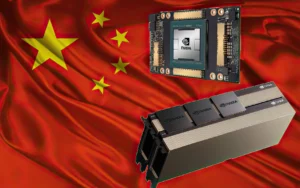Introduction
The automotive landscape is undergoing an unparalleled transformation, with electric vehicles (EVs) steering us toward a cleaner, more sustainable future. Yet, this swift transition isn’t without its challenges. One of the key puzzles to solve revolves around the symbiotic relationship between EVs and semiconductors.
These unassuming components are the linchpin behind innovation and functionality in the electric vehicle industry. In this comprehensive blog post, we’ll delve deeply into how semiconductors are shaping the EV industry, explore their far-reaching impact, and discuss the strategies in place to navigate these challenges.
A study by P3 Group found that a battery-electric vehicle (BEV) has easily twice as many semiconductors as an internal combustion engine (ICE) car. Specifically, P3 talks about a difference of 1,300 to 600 per car. And they are mainly in the powertrain (600 to 300). The inverter is particularly dependent and heavy in semiconductors.
Powertrain Control:
Imagine semiconductors as the maestros of an orchestra, skillfully conducting every note and crescendo. Similarly, semiconductors act as the guiding hand in an EV’s powertrain, meticulously controlling the electric motor and battery. They choreograph power distribution, optimize energy usage, and seamlessly transition between acceleration and deceleration. This precision ensures a harmonious and efficient driving experience.
Read more: Singapore: Global Semiconductor Powerhouse despite being a small city
How Semiconductors Achieve Powertrain Control
Semiconductors achieve powertrain control through a combination of intricate electronic components and intelligent software algorithms. Key devices and technologies used in this process include:
Motor Controllers: Motor controllers are semiconductor-based devices that regulate the flow of electric current to the electric motor. They translate driver inputs, such as pressing the accelerator pedal, into precise control of the motor’s speed and torque. These controllers use semiconductor technology to convert DC power from the battery into the AC power needed to drive the motor.
Inverters: Inverters are essential components that convert DC power from the battery into AC power to drive the electric motor. Semiconductors, such as insulated gate bipolar transistors (IGBTs) and metal-oxide-semiconductor field-effect transistors (MOSFETs), switch rapidly to control the direction and amplitude of current flow, enabling smooth and efficient motor operation.
Battery Management Systems (BMS): BMS is a crucial part of powertrain control, ensuring the optimal performance and safety of the battery. Semiconductors within the BMS monitor battery state, manage charging and discharging, and prevent overcharging or overheating through sophisticated control algorithms.
Electronic Control Units (ECUs): ECUs serve as the brain of the powertrain control system, processing data from various sensors and sending commands to the motor controllers and inverters. Semiconductors within ECUs enable real-time communication and decision-making based on inputs such as throttle position, speed, and battery status.
Sensors: Various sensors, such as Hall effect sensors and position sensors, use semiconductor technology to provide feedback on motor speed, position, and temperature. This data is crucial for precise control of the powertrain and ensuring optimal performance.
Software Algorithms: Beyond the hardware, sophisticated software algorithms run on powerful microcontrollers, often integrated into the ECUs. These algorithms analyze sensor data and adjust motor control parameters in real-time to optimize energy efficiency, torque delivery, and overall vehicle performance.
Safety Features:
Think of semiconductors as the vigilant guardians of your EV, akin to a watchful lighthouse guiding ships through treacherous waters. Just as a lighthouse prevents ships from crashing against rocks, semiconductors power safety features like Antilock Braking Systems (ABS) and airbags. ABS prevents skidding during sudden stops, while airbags, orchestrated by semiconductors, swiftly deploy during a collision to safeguard passengers.
Antilock Braking Systems (ABS): Semiconductors are crucial components in the ABS system. They monitor the rotational speed of each wheel through sensors and modulate brake pressure electronically to prevent wheel lock-up during sudden braking. This prevents skidding and helps maintain steering control, enhancing overall safety.
Airbag Deployment: Semiconductors are involved in the intricate system that determines when and how airbags deploy during a collision. Crash sensors send signals to the airbag control unit, which uses semiconductors to process this information and trigger the appropriate airbags to inflate rapidly, reducing the risk of injury to passengers.
Traction Control: Traction control systems rely on semiconductors to manage the power delivered to each wheel based on road conditions. By preventing wheel spin, semiconductors contribute to improved vehicle stability and reduced risk of accidents on slippery surfaces.
Electronic Stability Control (ESC): ESC systems use semiconductors to monitor vehicle dynamics and intervene by selectively applying brakes to specific wheels or adjusting engine power to help the driver maintain control during skidding or loss of control scenarios.
Connectivity and Infotainment:
Envision semiconductors as the architects behind an interactive amusement park inside your EV. They enable seamless connectivity via Bluetooth and Wi-Fi, allowing you to sync devices effortlessly. Moreover, they power the captivating infotainment experience, managing touchscreens, voice recognition, and audio systems, just like engineers who design an immersive theme park.
Bluetooth and Wi-Fi Connectivity: Semiconductors facilitate wireless communication between devices through Bluetooth and Wi-Fi connections. These connections enable hands-free calling, music streaming, and seamless integration with smartphones and other devices.
Navigation Systems: Semiconductors power the GPS navigation system, processing location data and providing real-time guidance to drivers. Touchscreen displays, powered by semiconductors, allow users to interact with maps and directions effortlessly.
Touchscreen Displays: The intuitive touchscreens found in EV infotainment systems rely on semiconductors to process touch inputs, display graphics, and run multimedia applications. Semiconductors ensure a responsive and user-friendly interface.
Audio Systems: High-quality audio systems in EVs leverage semiconductors for digital signal processing, amplification, and equalization, resulting in immersive and crystal-clear sound quality.
Advanced Driver Assistance Systems (ADAS):
Consider ADAS your co-pilot on the road, diligently navigating and alerting you to potential hazards. Semiconductors are the cognitive force behind this co-pilot, processing data from an array of sensors. They enable features like lane departure warnings, adaptive cruise control, and automatic emergency braking, enhancing your driving safety much like a co-pilot’s watchful eye.
Sensor Fusion: ADAS relies on a combination of sensors such as cameras, radar, lidar, and ultrasonic sensors. Semiconductors process data from these sensors to provide a comprehensive view of the vehicle’s surroundings, enabling features like adaptive cruise control and collision avoidance.
Lane Departure Warning and Lane Keeping Assist: Semiconductors analyze data from cameras and sensors to detect lane markings and the vehicle’s position within the lane. If the vehicle starts drifting out of the lane without signaling, the system can provide warnings or actively steer the vehicle back into the lane.
Automatic Emergency Braking: Semiconductors monitor the road ahead and can automatically apply the brakes if a potential collision is detected, helping mitigate the severity of an impact or even preventing accidents altogether.
Adaptive Cruise Control: Semiconductors enable adaptive cruise control systems to maintain a safe following distance from the vehicle ahead. These systems use sensors to monitor traffic conditions and adjust the vehicle’s speed accordingly.
Conclusion
The ascent of the electric vehicle industry is intricately intertwined with the capabilities of semiconductor technology. From orchestrating powertrains and enhancing safety to enabling connectivity and advanced driver assistance systems, semiconductors are the unsung heroes driving progress.




